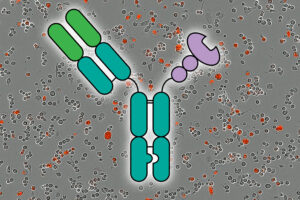
BlueScope’s engineers are spearheading a digital transformation at Australia’s largest steelworks through a strategic partnership with Siemens Senseye. This collaboration aims to keep BlueScope competitive and sustainable for the long haul.
BlueScope’s steel is integral to the built environment, featuring in bridges, stadiums, vehicles, farms, homes, and packaging. With approximately 14,000 employees and operations across Australia, New Zealand, Asia, and North America, BlueScope is a significant player in the global steel industry. At its flagship Port Kembla site in New South Wales, raw materials are processed into finished products on a massive scale, making efficiency, productivity, and sustainability paramount.
Global crude steel production remains close to 1.9 billion tonnes annually, contributing to around 7% of global energy-related carbon emissions. With production levels unlikely to decrease, there is growing pressure to reduce the carbon footprint of steelmaking. BlueScope recognized an opportunity at Port Kembla to take a decisive step in this direction while enhancing productivity and efficiency.
Pilot at Port Kembla
Port Kembla Steelworks, Australia’s largest manufacturing site, has been producing steel for nearly a century. Employing around 2,000 people, its output serves both domestic and export markets. When BlueScope sought to modernize its asset management, predictive maintenance emerged as the first major step.
Colin Robertson, Digital Transformation Manager at BlueScope, explained the deliberate choice: “We always had a concept of modernizing and introducing new technologies, and when we started looking at what we should do, predictive maintenance was clearly one of the things we wanted to start with. From day one, there was full executive support that if this was successful, we would take it across the globe.”
BlueScope selected Siemens’ Senseye Predictive Maintenance platform for its flexibility and AI-driven human-machine interaction. The pilot, launched in early 2022, initially covered 300 assets across three metal coating lines.
Chris Wonson, Predictive Maintenance Lead, noted, “We chose Senseye over three or four different platforms, and that was mainly around the AI component – the ability to tune it automatically with its ‘thumbs up’ and ‘thumbs down’ feature.”
Within seven months, the pilot was delivering results. BlueScope expanded Senseye across its Australian plants and then to global sites, avoiding around 2,000 hours of downtime and 53 full process interruptions worldwide.
Colin added, “The biggest benefit is the reduction in unscheduled delays and therefore increased throughput for the plants.”
How Senseye Works
BlueScope operates equipment of varying ages and complexities, from blast furnaces to finishing lines. “We’ve got the complete array, from the very simple to the latest and most modern equipment,” Chris explained. “Everything from bringing in iron ore and raw materials to finished products going out the gate.”
Senseye analyzes data such as vibration and pressure to detect early warning signs of equipment failure. At Port Kembla, BlueScope installed IoT vibration sensors on critical assets, filling long-standing gaps in preventive maintenance. Data flows into the platform at regular intervals, allowing anomalies to be flagged long before they cause downtime.
Engineers configure thresholds and control parameters for their specific lines, while Senseye prioritizes cases so teams can focus on assets most at risk. According to Colin, usability has been a crucial factor in BlueScope’s success with Senseye. “We wanted something that people could use, not something that was going to add to their workload,” he said.
Culture Shift Through Technology
The impact of predictive maintenance at Port Kembla extends beyond reduced downtime, marking a cultural shift in how BlueScope approaches asset health and digital transformation. Chris emphasized, “The main benefit is seeing machine failure coming and being able to intervene before you experience a catastrophic failure or loss in production.”
Predictive maintenance has also improved safety by avoiding risky manual interventions, such as handling steel strips during unplanned stoppages. Furthermore, repairing assets in a less failed state has reduced overall maintenance costs. Colin noted the substantial sustainability benefits: “If we stop the line, we obviously create scrap and waste. That means we’ve spent energy all the way from the raw materials, through ironmaking, steelmaking, rolling – and then we scrap the steel. That’s not good for energy efficiency, and therefore it’s not good for greenhouse gas emissions.”
For BlueScope, predictive maintenance is now embedded in its decarbonization and efficiency journey. The success of Senseye has proven to be a catalyst for changes across the company. Chris expressed a personal connection to the mission, “I’m proud to work for this company – I’ve always lived in this area, and I probably always will. I want to see these steelworks survive for the next generation to take over and thrive with, and leading the digital transformation is going to give us the best chance of doing that.”
For more insights, tune into the extended interviews with BlueScope’s Chris Wonson and Colin Robertson on Siemens’ Trend Detection Podcast.







